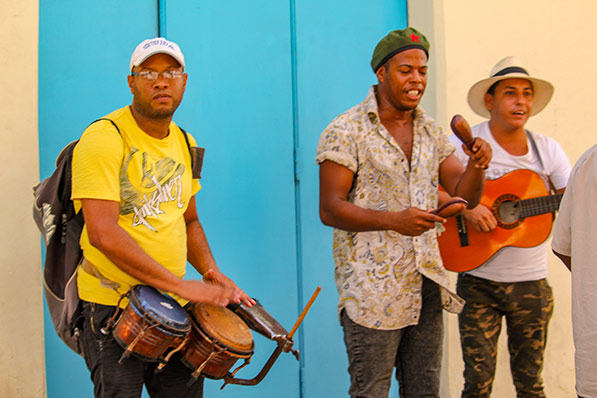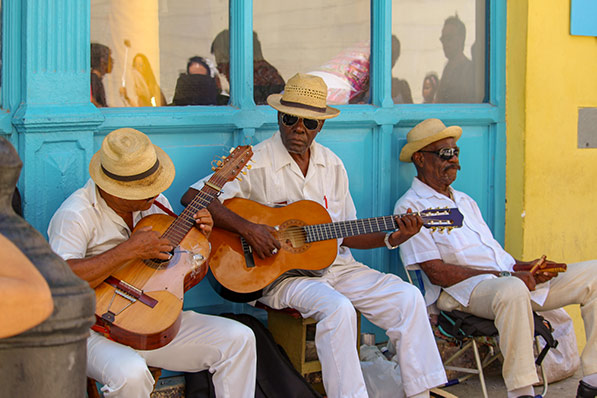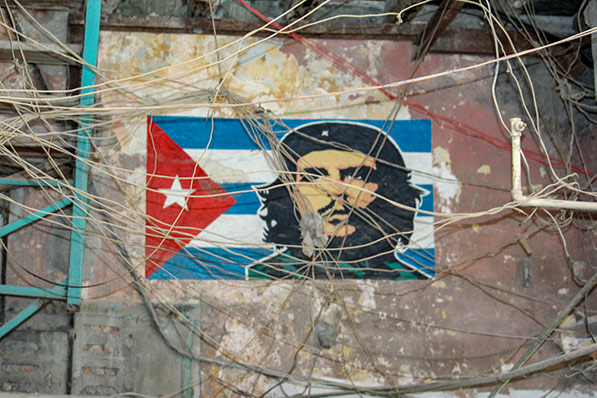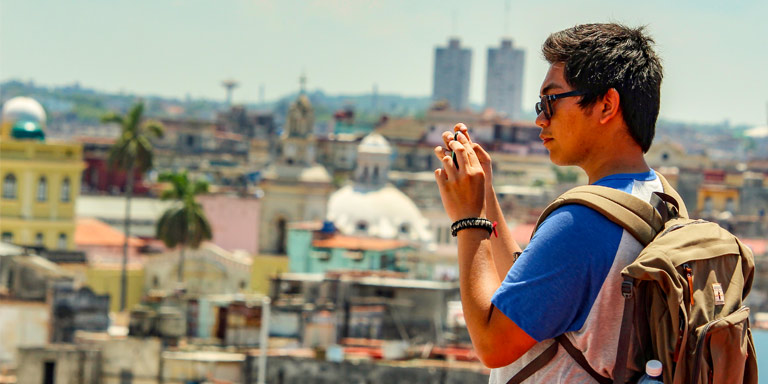Roy Tan: Student Report from 2017 Alternative Fall Break in Cuba
With every step across the bustling neighborhoods of Havana, one can feel their body gradually absorb the percussion-rich rhythms of Cuban music, and by the time they notice, each step they take follows the beat of the drums. The Global Initiatives trip to Havana, Cuba, was one that was filled with a myriad of wonderful cultural adventures that allowed us, students, to immerse ourselves in a society that completely differs our own while making an impact towards its future.
The aspect of the culture that I came to love during my short stay there was the vibrant and festive music that can be heard at almost any turn; however, if you pay too much attention to the music, you might miss all the other sounds that partly define the Cuban way of life such as the unique sounds of bicycle-taxis around the streets.

Since I came to Cuba with our service goal to be the primary thought in my mind, I did not pay much attention to the rich ambience that the sounds that the city makes. As soon as I got out of the airport after arriving in Havana, our in-country contact, Andres, had prepared a taxi for us. The first thing that caught my attention was the music on the radio. To my surprise, much of what came on sounded much like the pop music you would hear around the United States. This had initially narrowed my mind of what music I would hear around the city, but as we explored each corner of Havana, I began to notice the charm of the music that could be heard at every turn.
The first encounter I had with Cuban music occurred when we ate at a tiny restaurant called Kilometer Zero. The lively restaurant had the usual jostle of people, but all the sound was immediately taken over by a double bass that had its strings plucked. The bellow sounds that broke through all the noise was immediately followed by a guitar, bongo drums, and singing, which I would later learn is one of the most common combinations of instruments for performers around the area. This was a combination of instruments unfamiliar to me, especially since it was the first time I heard such a playful plucking of the bass alongside the bongos, for which Cuba is known. It was completely foreign, but the lively music caused the restaurant to become even more animated and joyous which is a great feat since the people of Cuba always seem so jubilant at any given point, naturally. This first performance was only the beginning of what I’d get to experience throughout the trip.

Many restaurants around Havana offered live music that brightened up people’s moods to customers and passersby. However, there were also plenty street performers that gleefully performed in areas filled with tourists. If you take a walk down the road of Obispo, every few steps you take fills your ears with differing styles of music that originate from Latin American and African roots. The plazas, too, offered similar styles of music, but if you’re lucky, you can stumble upon a group of Capoeira students at the Plaza Vieja chanting while doing a live demonstration of their Afro-Brazilian fighting style.
Havana is a music box with many different compartments. Opening one and listening to it leaves you with a desire to listen to all the music that it has to offer.
There were many forms of music, and with each one that I heard, I could slowly trace the roots of such a unique and lively sound that all the music in Havana, Cuba shares. Most of the performances had at least one form of percussion which could be maracas that rattle with a sharp tone, claves that make bright clicking noises, bongo drums that reverberate with a rich timbre, and many more. Maracas reveal Cuba’s ties with the indigenous tribes in Latin America in which they were used for religious purposes. The bongo drums resemble another instrument used in Cuba called Batá Drums which originated in Africa and are also used for religious purposes. In addition to the percussion instruments, the other instruments that play the melody could vary to a wide degree.
Classical guitar, flutes, clarinets, piano, or even trumpets could be heard playing beside the road. All these instruments originate from all over the world, but they are all played with the energy for which Latin music is known. The music in Cuba has kept the energy of Latin music but has formed its own mixture of sound from instruments both adopted and originating in Cuba, such as bongos and claves.
Though the music is a very important aspect of the Cuban culture, it is also important to note the countless sounds that become a part of the lifestyle of one living there. For example, one of the most important sounds that I became accustomed to was the signature high-pitched whistles that come from behind you. This whistling sound is most likely the sound of bicycle taxis signaling for people walking to move out of the way. With that note, there are many classic cars in Cuba that have a distinguishable honk to their horns to signal for people to move out of the way.
Though the sounds are not limited to vehicles, but also to the sounds of life within each neighborhood which can consist of dogs running around and playing, people making purchases from carts along the streets, and optimistic vendors who are trying to attract the hundreds of tourists that are present at almost any given point in the area.
The most distinguishable sound, however, comes at night when the clock strikes nine. The sound of a cannon roars in the air, indicating the century-old tradition of the gates of the port closing at night, ensuring the safety of the people.
There are many things in Cuba that I came to love such as the welcoming people, the rich history, and the vibrant music. It is a place that can open people’s eyes and ears to a beauty that can only be known after being immersed in a culture that seems to be able to create happiness from seemingly anything. Cuba is a place where everybody should visit at least once in their lifetimes, and by the end of the visit, their steps, too, will unknowingly follow the beat of the rhythms of Cuba.

